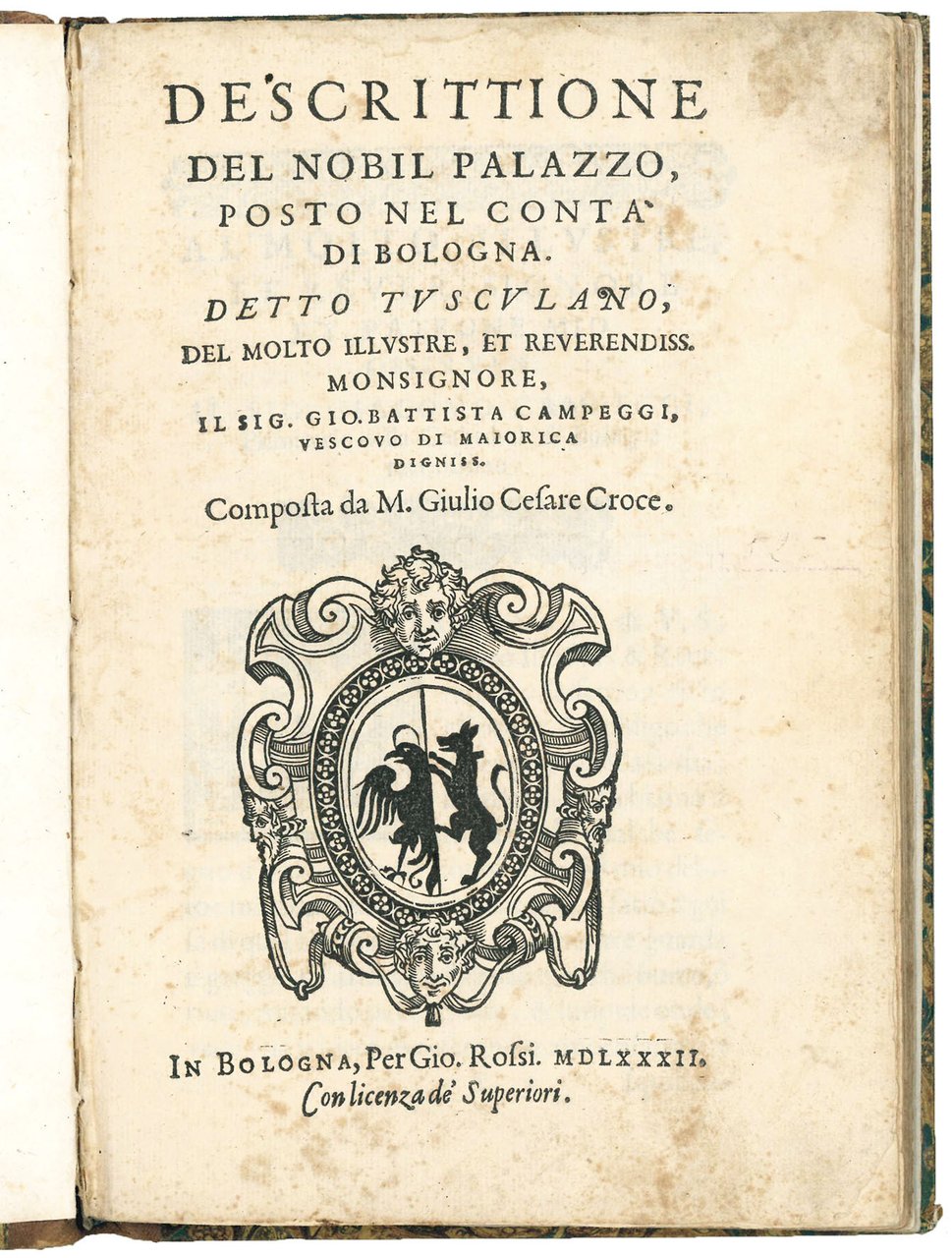
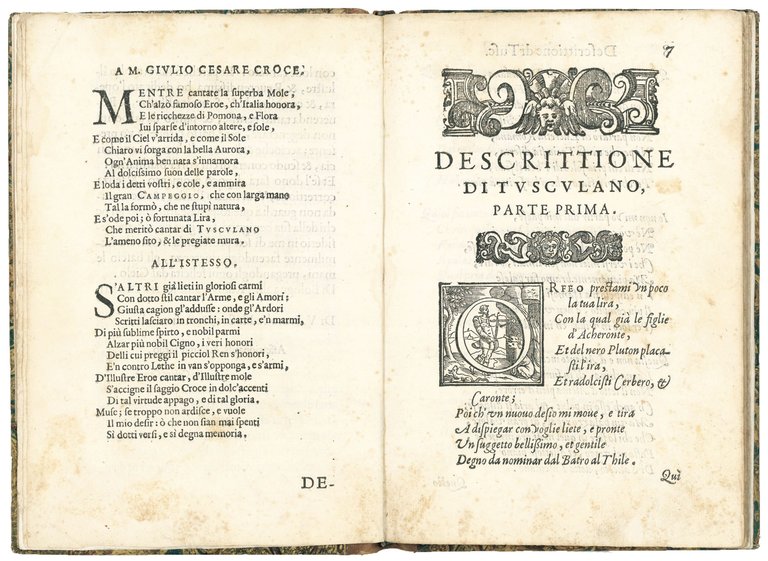
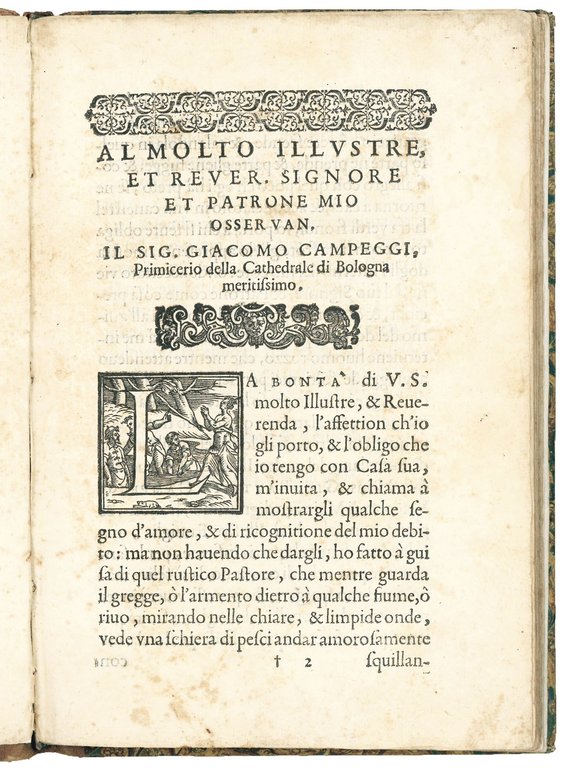
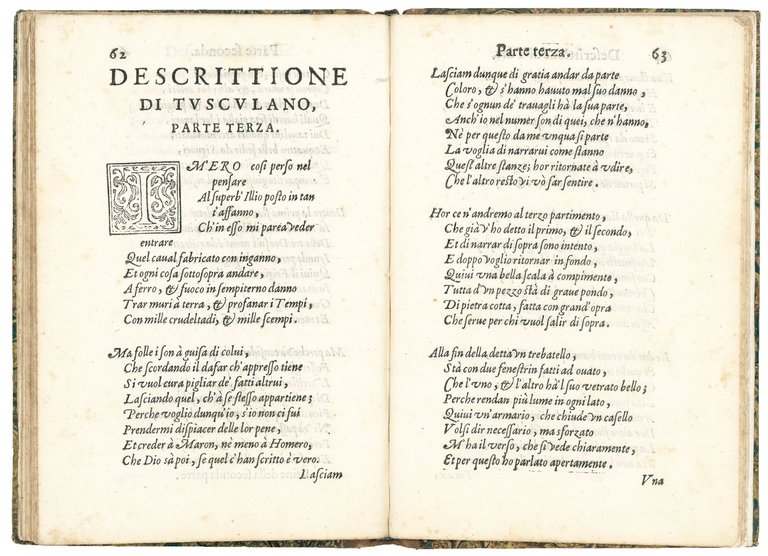
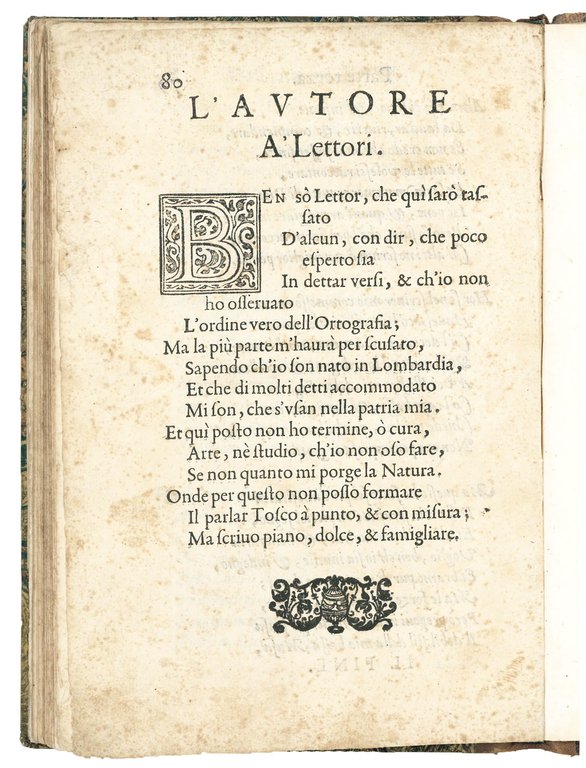
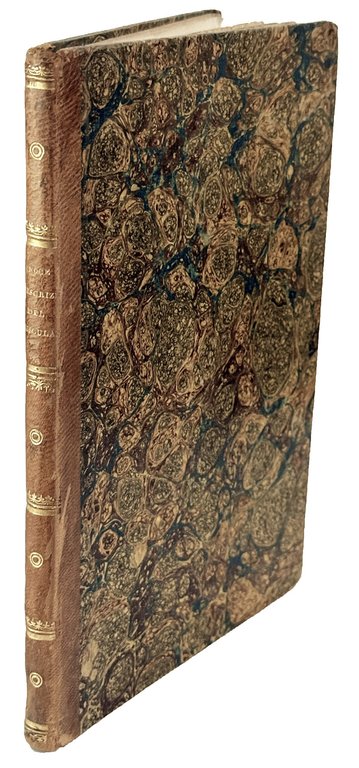
Livres anciens et modernes
CROCE, Giulio Cesare (1550-1609)
Descrittione del nobil palazzo, posto nel contà di Bologna. Detto Tusculano, del molto Illustre, et Reverendiss. Monsignore, il Sig. Gio. Battista Campeggi, Vescovo di Maiorica. Composta da M. Giulio Cesare Croce
Giovanni Rossi, 1582
5000,00 €
Govi Libreria Antiquaria
(Modena, Italie)
Les frais d'expédition corrects sont calculés une fois que l'adresse de livraison a été indiquée lors de la création de la commande. Un ou plusieurs modes de livraison sont disponibles à la discrétion du vendeur : standard, express, economy, in store pick-up.
Conditions d'expédition de la Librairie:
Pour les articles dont le prix est supérieur à 300 euros, il est possible de demander un plan de paiement échelonné à Maremagnum. Le paiement peut être effectué avec Carta del Docente, Carta della cultura giovani e del merito, Public Administration.
Les délais de livraison sont estimés en fonction du temps d'expédition de la librairie et de la livraison par le transporteur. En cas de retenue douanière, des retards de livraison peuvent survenir. Les frais de douane éventuels sont à la charge du destinataire.
Pour plus d'informationsMode de Paiement
- PayPal
- Carte bancaire
- Virement bancaire
-
-
Découvrez comment utiliser
votre Carta del Docente -
Découvrez comment utiliser
votre Carta della cultura giovani e del merito
Détails
Description
4to (202x136 mm). 80 pp. Collation: †4 A-I4. Campeggi's woodcut arms on the title page. Woodcut historiated and decorative initials. Roman and italic types. 19th-century quarter calf with lettering piece on spine (slightly worn). Some minor foxing and staining, marginl hole repaired to the last two leaves not affecting the text, a good copy.
Extremely rare first and only edition of this poem, divided into three parts and consisting of two hundred and fourteen octaves, which provides a detailed description of the interior and exterior of the beautiful palace purchased by Giovanni Battista Campeggi, Bishop of Majorca, in 1567. Known as Tusculano, the palace was located four miles north of Bologna on the Saliceto (today Corticella) plain and became a gathering place for eminent learned and noble figures. The detailed account of the rooms (including the kitchen, the pantry and the cellar), frescoes, paintings, furnishings, silverware, drapery, leathers and crockery vividly depict the palace, which no longer exists today, while arousing curiosity and awe. As such, the poem is an excellent example of Croce's poetics, which frequently finds inspiration in the enumeration of objects.
The book opens with a dedicatory epistle to Giacomo Campeggi, primicerius of the Cathedral of Bologna, dated 21 December 1582, and a sonnet addressed to readers, in which the author admits that he is not very familiar with the Tuscan language.
The edition bears the Campeggi coat of arms on the title page and is adorned with woodcut ornaments and initials at the beginning of each section. Also the choice of the 4to format (larger than Croce's usual 8vo pamphlets) denotes the work's illustrious destination.
Croce felt most at ease in the piazzas, streets and taverns, rather than the palaces of the lords, although he always sought to be welcomed there. And when, quite occasionally, he happened to enter the luxurious villa of G.B. Campeggi, it seemed to him that he was entering an incredible, prodigious place that was completely foreign to his experience. He was so stunned and amazed that he felt compelled to describe every minute detail, from the frescoes and crockery to the furniture, books, draperies and linens. He could not tear himself away from it, lingering in his description for over two hundred octaves, a considerable lenght even for someone as generous as he was when it came to inventories of all kinds.
Giulio Cesare Croce was a self-taught poet and storyteller who, due to his ability to bridge the gap between the cultured and popular worlds and between oral and written culture, occupies a unique position in the Italian literary scene. Born in San Giovanni in Persiceto near Bologna in 1550 to a family of blacksmiths, he received an irregular education and was supported by the Fantuzzi family of Medicina. He divided his time between blacksmithing and storytelling in Bologna until, in 1575, he devoted himself entirely to storytelling. He travelled from market to market, staying in the homes of the wealthy, but despite his popularity, he remained poor. He also spent some time in Venice, where he performed for local dignitaries. Appreciated by the renowned Modenese musician Orazio Vecchi for his talent as a versifier, Croce collaborated with him on the celebrated Amfiparnaso (1597), widely considered to be the first Italian “melodramma giocoso”. He died in Bologna in 1609.
More than four hundred works are attributed to Croce, most of which were published in modest, poorly printed booklets. Written in Italian or Bolognese dialect, in prose or verse, his pamphlets contain lively descriptions of the lives of the poor, as well as jokes, humorous stories, proverbs and accounts of popular festivals and calamities.
Edit 16, CNCE14310; USTC, 824852; O. Guerrini, La vita e le opere di Giulio Cesare Croce, Bologna, 1879, no. 81; Le stagioni di un saltimbanco, Bologna, 2009, p. 39; Una città

